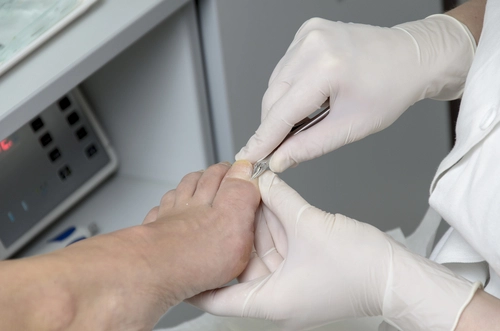Think Q7-Q9 with Foot Care Class Findings

Without systemic condition, your claim may go cold.
If you don’t include modifiers Q7, Q8, or Q9 in your foot care claim, your payer will not pay. Your choice of the correct modifier hinges upon the findings documented in your doctor’s notes.
Familiarize yourself with the list of findings in this article. Then you can relate your physician’s notes to the correct finding in one of the three classes and determine the correct modifier to create an airtight claim.
Partner Qs with Findings
CMS guidelines require that when you are reporting foot/nail care, other than routine care that isn’t medically necessary, you need to include the applicable “Q” modifier.
“These modifiers were developed to assist with Medicare coverage determinations for routine foot care,” says Maryann C. Palmeter, CPC, CENTC, director of Physician Billing Compliance at University of Florida Jacksonville Healthcare, Inc. “Routine foot care is the paring, cutting, or trimming of corns and calluses, or debridement and trimming of toenails in the absence of localized illness, injury or symptoms involving the foot.”
Which modifier you’ll choose is based on the “findings” your provider documents, as follows:
Master the Involved Steps
Before you can bill for routine foot care using a code in the 11055-11057 (Paring or cutting of benign hyperkeratotic lesion [eg, corn or callus]; …) range, including corn and callus treatment, you need to be sure the patient exhibited symptoms or findings. CMS has split the findings into three classes as follows:
Class a findings:
Class b findings:
- hair growth (decrease or absence)
Class c findings:
Once you have the findings from the notes, you can choose the appropriate “Q” modifier that represents the systemic conditions in the clinical scenario.
Iron out the snag: “Q” modifier confusion is cumbersome for podiatry, vascular surgeons, wound care specialists, and diabetic foot specialists, says Suzan Berman (Hauptman), MPM, CPC, CEMC, CEDC, director of coding operations-HIM at Allegheny Health Network in Pittsburgh, Pa. “The biggest problem is, although the patients usually have multiple co-morbidities and have often tried various other treatment options, the information may or may not be in the note for the encounter. Then, the additional wrinkle is to make certain the physician conveys the right information regarding the patient and his foot issue in the note clearly, so that the appropriate modifier is selected.”
Apply What You’ve Gathered
You’ve made it through the criteria and now you can apply it to the scenario in the notes.
Example: A diabetic patient (250.71, Diabetes with peripheral circulatory disorders, type i [juvenile type], not stated as uncontrolled) presents with dry, brittle, and ingrown nails on her right foot. She complains of cold feet (a class c finding) and pain in her calf (a class c finding). The podiatrist determines that the patient lacks a posterior tibial pulse (a class b finding). The podiatrist debrides the nails.
Code it: You will use the appropriate level office visit from the 99201-99215 (Office or other outpatient visit for the evaluation and management of a new or established patient, ...) range with modifier 25 (Significant, separately identifiable evaluation and management service by the same physician or other qualified health care professional on the same day of the procedure or other service) attached. The patient meets the systemic disease criteria for diabetes mellitus, as well as one class b finding (absent posterior tibial pulse) and two class c findings (claudication and temperature change). So you will report the debridement as 11720 (Debridement of nail[s] by any method[s]; 1 to 5) with modifier Q9 attached to indicate the documented class findings.
Watch out: Just because your podiatrist debrides nails on both feet doesn’t mean that you report the lowest level more than once. Use the code (11720 or 11721, Debridement of nail[s] by any method[s]; 6 or more) range that describes the total number of nails on both feet.
- nail changes (thickening)
- pigmentary changes (discoloration)
- skin texture (thin, shiny)
- skin color (rubor or redness)

